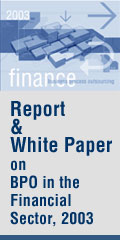|


|
24% rise in Banks NPAs in 2nd QR and Capital Adequacy Ratio declines by 2% Points, says Assocham
If NPAs and CAR reported by the commercial banks are an indication of the financial strength, the second quarter results of the Indian banking sector do not portray a healthy picture. This is because the net non-performing assets have risen by an average 24 per cent while capital adequacy ratio reduced by 2 percentage points in Q2 of current fiscal as compared to the corresponding period of previous year, according to the ASSOCHAM Eco Pulse (AEP) Study.
The ASSOCHAM Study titled “Solvency Analysis of the Indian Banking Sector”, reveals that on an average 24 per cent rise in net non performing assets (NPAs) have been registered by 25 public sector and commercial banks during the second quarter of the FY’09 as against Q2-FY’08. However, the average capital adequacy ratio (CAR) of the banks slipped to 12.68 per cent in Q2-FY ‘09 from 13.41 per cent in the previous year.
The analysis of the Indian banking sector was based on the quarterly results posted by 25 Indian banks on Bombay Stock Exchange (BSE) from 20th - 29th October 2008. For a macro analysis, the total 25 banks included an aggregation of 15 public sector banks (PSBs) and 10 private sector banks. The AEP analysis of the Indian banking sector’s solvency is based on two broad parameters including net non performing assets and capital adequacy ratio.
“Although the Indian banking sector has remained insulated from the global financial crisis, the emerging trends as found in the AEP do not give positive signals”, says the ASSOCHAM spokesman.
As per the AEP, the aggregate net non-performing assets (NPA) of 25 banks increased by 24.36 per cent to Rs 17,522.82 crore in second quarter of 2008-09 from Rs 15,462.84 crore in the same period of FY’08. Karur Vysya Bank recorded maximum rise of 275.36 per cent in net NPAs in Q2-FY’09 with Rs. 50.03 crore as against Rs 13.33 crore in Q2-07. It was followed by HDFC bank with an increase by 139 per cent, Vijaya Bank (132 per cent), State Bank of Hyderabad (81.42 per cent) and IDBI (57 per cent).
On the contrast, seven major PSBs recorded a significant decrease in net NPAs, including Central Bank of India (-87.39 per cent), Oriental bank of Commerce (-82.18 per cent), Union Bank of India (-73.38 per cent), Dena Bank (-17.24 per cent), Bank of India (-14.80 crore), Bank of Maharashtra (-7.75 crore) and Indian Bank (-1.54 per cent) have shown improvement in net NPA levels. Whereas, among the private sector banks only South Indian Bank registered an improvement in net NPAs by -29.82 per cent.
In terms of capital adequacy ratio, out of the 25 banks posting their results for the quarter ending September 2008-09, it was found that 16 banks witnessed a fall in their CAR from the previous fiscal, but they still managed to remain above the prescribed limit of nine per cent posed by the Basel II accord. The AEP study also revealed that in Q2 FY’09, there were 11 public sector banks out of the total 16 banks that registered decline in
CAR from the previous year.
Axis bank registered the maximum decline in CAR from 17.59 per cent in Q2 FY’08 to 12.2 per cent in Q2 FY’09. It was followed by HDFC bank from 14.9 per cent to 11.4 per cent, Bank of Maharashtra from 13.6 per cent to 10.78 per cent and ICICI bank recorded a decline from 16.79 per cent to 14.01 per cent respectively. In the second quarter of current financial year, the Central Bank of India registered a 9.85 per cent CAR from the previous 12.38 per cent. It was the only bank whose CAR dipped just around the thresh hold limit of 9 per cent CAR posed by the Basel II.
However, Federal Bank had the maximum rise in CAR upto 20.81 per cent in Q2 FY 2008-09 from 13.08 per cent a year earlier. South Indian Bank at the second position registered a mere increase from 14.36 per cent to 14.44 per cent in the second quarter of current financial year.
Other banks which registered a significant rise in CAR include Yes Bank, whose ratio rose to 14.28 per cent over 13.02 per cent in previous year, City Union Bank from 12.85 per cent to 13.24 per cent, Karnataka Bank from 13.03 per cent in the second quarter of the previous fiscal to 13.21 per cent in the current fiscal and Dena Bank registered an increase in the ratio from 11.47 per cent in Q2 FY’09 to 12.34 per cent in same quarter of the last fiscal.
(This is press release of assocham)
CLICK FOR Updates on Domestic Lending Rates
CLICK FOR SPECIAL SECTION ON GLOBAL FINANCIAL CRISIS
CLICK FOR MORE FEATURES & STORIES
|
|
|


